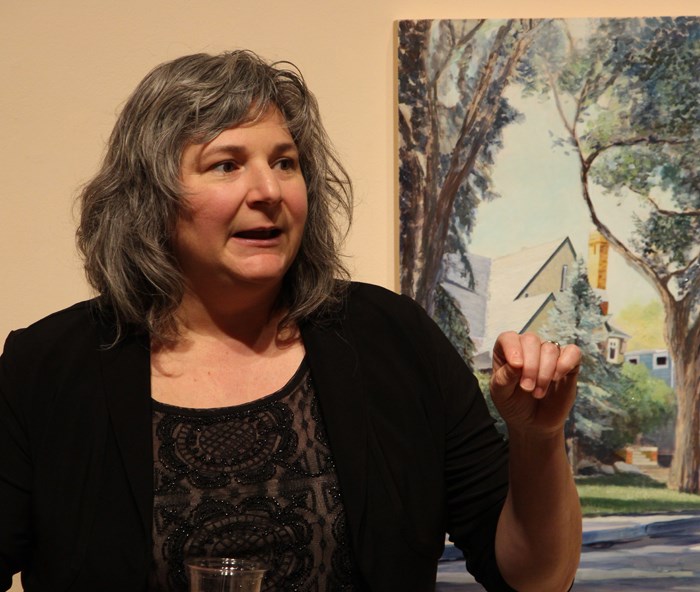Every person has a story to tell, and over the 150 years since confederation, Canadians have filled the country with their stories. Heather Cline has embarked on a 10 year project to hear those stories and paint the places where they happened. Her show, Quiet Stories from Canadian Places, runs at the Godfrey Dean Art Gallery until February 25.
The concept was to hear people’s life experiences and translate it into paintings, Cline explains. She wanted different ideas of community, and recorded the stories and presents them with the work, through small boxes that people can listen to as they tour the gallery.
“Sometimes I would paint the place that was the exact place in the story they told me about, and sometimes I would paint the place which, for me, vividly represented the story they were telling.”
The stories Cline selected were the stories that touched her, whether or not they were verifiable.
“I made absolutely no judgement on people about whether or not their stories were true, it didn’t concern me. What concerned me was their experience of memory, that incident, and their passion for it.”
The paintings are from communities across the country, but Cline wanted to make paintings that were both specific and that could represent different communities and places. She made the choice to remove the names of places in the recordings as well.
“Part of this project was reflecting on who makes history... We talk a lot in Canada about big history moments, and I thought a lot about how every day people and every day places have real meaning and importance in who we are as Canadians. As I did the project, one of the things I loved was that stories became universal stores. It might have been about a local corner store some place in Oshawa, Ontario. But it meant as much to someone who had a similar experience in Regina, or Yorkton or Vernon, BC.”
The paintings themselves are constructed like a memory. From a distance, they look nearly photo-realistic, but they begin to change up close, as the eye notices hidden details, areas with a loose painting style and the many different layers of paint - sometimes upwards of 20 layers - and the effect it has on the image. They also change based on where the viewer stands, thanks to the techniques Cline uses to make the paintings change depending on the light. Cline was deliberate in making images that “fall apart” close up.
“If you’re painting there’s a reason you’re painting and not taking a photograph. You want a different kind of effect on the viewer. I think one of the beauties of painting is the ability to shift how a person sees the work depending on light conditions, depending on angle, depending on distance,” said Cline.
“I’m a bit of a trickster, I admit it. I’ve always hidden things in paintings, had little things underneath. I feel as though these paintings are the ultimate in playing with you a little bit.”
Given the nature of the show, Cline encourages people to come back after the opening, where it’s easier to hear the stories and explore the work at their own pace. She is also excited about a virtual version of the show, planned for May at www.heathercline.ca, which will collect the work and the audio files online, because she wants the audio of the stories to be easily heard.



